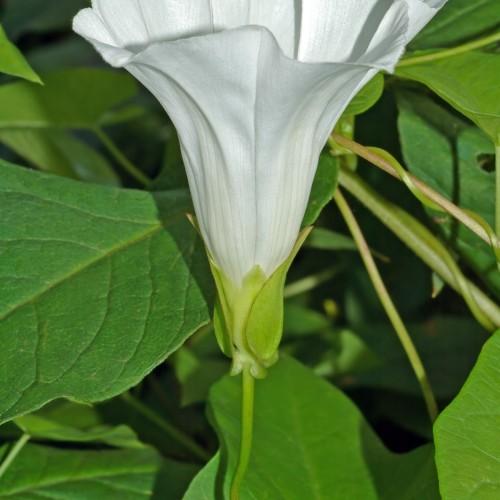
Erect False Bindweed
Calystegia spithamaea subsp. stans
Watering:
Minimal
Hardiness Zone:
Sun:
full sun,part shade
Leaf:
Yes
Growth Rate:
Low
Invasive:
Yes
watering
Low False Bindweed thrives in well-drained, moist soils. It prefers full sun and will tolerate partial shade. To keep your Low False Bindweed healthy and thriving, water it once every week to 10 days. During especially hot or dry weather, increasing watering frequency may be necessary. To ensure it is properly watered, check the soil by sticking your finger into the dirt to a depth of 1 to 2 inches. If it feels dry, the plant needs to be watered. Be careful not to water it too often or too little. Too much water can lead to rot and root diseases, and too little can cause it to wither and die.
sunlight
Low False Bindweed thrives best in bright, indirect sunlight. It prefers 4 to 6 hours of indirect sunlight daily, with little difference whether it is morning or afternoon sunlight. Though the plant can survive in some shade, it performs best with consistent sun exposure. Low False Bindweed should be placed in bright, but not direct, sunlight to avoid wilting, leaf scorch, or bleaching from too strong sunlight.
pruning
Pruning is an important part of caring for all plants, and Low False Bindweed (Calystegia spithamaea) is no exception. Pruning Low False Bindweed encourages thick, healthy growth and can help keep the plant in check, as it can grow rapidly and spread horizontally. When to prune Low False Bindweed is important as well. Generally, it is best to prune in late autumn or early winter when the plant is dormant. This will help to reduce overall growth, as well as limiting the spread of the plant. Pruning can also be done in late spring or early summer, but this should not be done too severely; pruning in late spring or summer could also encourage the growth of flower buds, resulting in fewer flowers. How much to prune is also critical. To maintain a good, healthy form, prune about 1-third of the total plant mass, removing any old, invading branches or shoots that have become unruly or are taking up too much space. If the plant is becoming too woody or overgrown, it may be necessary to prune 1-half to 2-thirds of the total mass. If in doubt, it's best to err on the side of caution and remove slightly less than necessary to be sure that the plant is not damaged by over-pruning. By following these guidelines, Low False Bindweed can be kept healthy and looking its best.
